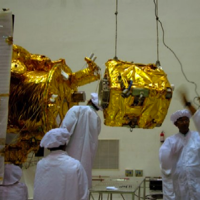On Jan. 31, 2011, the U.S. assistant secretary of state for South and Central Asian affairs, Robert O. Blake Jr., told the Indian press that the United States is hoping to become India's "close partner" in space exploration. Blake's comments reflected a major tenet of the Obama administration's 2010 National Space Policy (NSP): partnerships in space exploration with more nations. Although the global future in space may well be characterized by countries both cooperating in some areas and competing in others --what some have called "coopetition" -- U.S. National Security Adviser Tom Donilon has been clear that Washington wants a "full embrace of India" on space matters. While this is a laudable objective that recognizes the increasingly globalized nature of space technology, it raises two very important questions. First, what does the United States want from its partnership with India? And second, what kind of behavior in space is Washington willing to accept from India within that partnership?
Successful partnerships require that both sides feel they will benefit. They also require that all sides accept shared norms of behavior. Consider the case of China: America has shunned space cooperation with China because of its repressive political system, a lack of mutual trust and a widely shared uncertainty in Washington about China's military objectives in space. And when China tested an anti-satellite weapon (ASAT) in 2007, becoming only the third nation in the space age to achieve such a capability, the United States and the rest of the world strongly criticized Chinese actions.
India is a different case, particularly since U.S.-Indian relations lack the many decades of ideological and military hostility that shaped America's early relationship with the People's Republic of China. But questions remain over India's objectives in space. While there is a significant amount of information available about Indian activities in space, from launch vehicles to satellites, there is relatively little analysis concerning India's motivations and aspirations. Here, New Delhi's declaratory policies are generally consistent in rhetoric, but often contradictory with the substance of Indian space policy.

